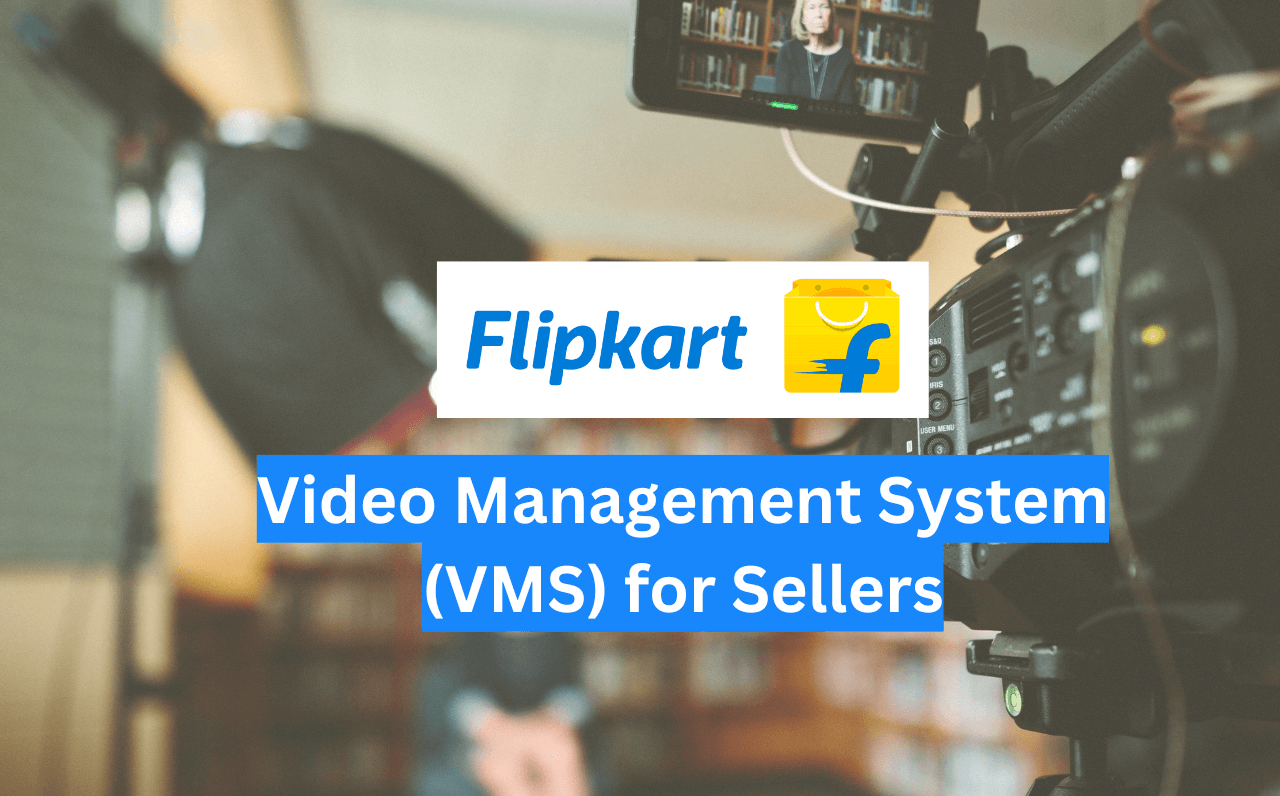Understanding Flipkart Video Management System (VMS) for Sellers

In the fast-paced world of e-commerce, the ability to adapt and optimise operations is crucial for success. According to a recent report, 73% of consumers say that transparency in the purchasing process significantly influences their buying decisions. As sellers strive to meet these expectations, Flipkart has introduced the Flipkart video management system (VMS), a tool designed to enhance order fulfilment and reduce returns. This article will delve into what the VMS is, its benefits for sellers, and how to effectively implement it in your operations.
- What Is Flipkart’s Video Management System (VMS)?
- Benefits of Using the Flipkart's Video Management System
- Setting Up the Flipkart Video Management System
- Best Practices for Using the Flipkart Video Management System Effectively
- WareIQ’s Return QC App: Enhancing Returns Management for Flipkart Sellers
- Conclusion
- FAQs About Flipkart's Video Management System (VMS)
What Is Flipkart’s Video Management System (VMS)?
The Flipkart video management system is an innovative solution tailored for sellers on the platform. It automates the recording of packing footage, which is then shared directly with Flipkart. This functionality helps sellers defend against incorrect customer claims, such as missing items or misshipments.
Key Features of VMS
- Automated Recording: Every packing process is recorded automatically.
- Proof of Fulfilment: Footage serves as evidence in case of disputes.
- Compliance Requirement: Adoption of VMS is mandatory for sellers wishing to remain eligible for Flipkart’s Seller Protection Fund (SPF).
This system not only enhances transparency but also significantly reduces errors in the packing and shipping process.
Benefits of Using the Flipkart’s Video Management System
Implementing the Flipkart’s VMS offers numerous advantages that streamline operations and improve seller performance.
Reduce Misshipments and Disputes
One of the primary benefits of VMS is its ability to minimise misshipments. By recording each order’s packing process, sellers can provide concrete proof of correct packing, reducing disputes related to incorrect orders or missing items. This capability protects seller ratings and minimises negative customer feedback.
Lower Return Costs
Returns can be both costly and time-consuming. With VMS, sellers can present proof of accurate order fulfilment, thereby minimising fraudulent claims and avoiding unnecessary returns. This leads to significant savings in operational costs.
Improve Order Accuracy and Efficiency
The integration of VMS into daily operations streamlines the packing process. It helps eliminate errors in order fulfilment by ensuring that each item is packed according to customer specifications. This efficiency not only enhances customer satisfaction but also contributes to repeat business.
Mandatory for SPF Eligibility
To maintain Flipkart’s Seller Protection Fund (SPF) eligibility, sellers must adopt VMS. The SPF compensates sellers in the event of certain losses, making compliance essential for safeguarding business interests.
Setting Up the Flipkart Video Management System
Getting started with VMS is straightforward. Here’s how you can set it up effectively:
Requirements for Setting Up VMS
Before diving into the setup process, ensure you have the following tools in place:
- Reliable Internet Connection: A strong, consistent Internet connection is essential for live video streaming.
- Windows Machine: VMS operates on a Windows-based system.
- IP or USB Camera: This camera will record the packing process.
- Barcode Scanner: Necessary for tracking shipping labels during packing.
Step-by-Step Setup Process
- Contact Flipkart Support: Reach out to Flipkart’s VMS support team to obtain your login credentials.
- Install Your Camera: Position the camera at your packing station, about 2-3 feet above the packing desk, ensuring a clear view of the process.
- Set Up VMS Portal: Log in to the VMS portal with your credentials, create user accounts for your packers, and set up unique feeds for each camera.
- Start Recording: Once everything is set up, begin recording your packing process. The footage will automatically be shared with Flipkart.
- Scan Shipping Labels: As you pack each item, scan shipping labels on the VMS portal to ensure product details are visible in the footage.
Also read: Flipkart Integration with WMS
Best Practices for Using the Flipkart Video Management System Effectively
To maximise the effectiveness of VMS, follow these best practices:
- Ensure a Clear Camera View: Position your camera properly to capture all aspects of the packing process.
- Check Your System Daily: Verify that your internet connection, camera, and VMS application are functioning correctly before starting daily operations.
- Review Footage Regularly: Periodically check saved footage from the VMS portal to ensure recording accuracy.
- Train Your Staff: Provide comprehensive training on using VMS effectively during packing operations.
You may also like to read: Myntra Video Management System (VMS) for Sellers
WareIQ’s Return QC App: Enhancing Returns Management for Flipkart Sellers
Effective returns management is vital for ensuring a positive experience for sellers in the dynamic realm of e-commerce. WareIQ’s Returns QC app is designed to work alongside Flipkart’s Video Management System (VMS), delivering a streamlined approach to handling returns.
Tackling Returns Challenges
Filing return claims on Flipkart can be intricate, with sellers often encountering several obstacles:
- Documentation Issues: Many return submissions lack clear shipping labels and order IDs due to low-quality video evidence, complicating the validation of claims.
- Condition Verification: Sellers frequently find it challenging to provide adequate proof of a product’s condition upon return, which can result in claim denials.
- Compliance with Marketplace Standards: Flipkart mandates that sellers provide clear, timestamped evidence for claims. Without this clarity, sellers may face delays and inefficiencies.
WareIQ’s Returns QC app effectively addresses these challenges by automating proof collection during returns, ensuring that sellers meet Flipkart’s stringent requirements.
Core Features of WareIQ’s Returns QC App:
1. Automated Proof Collection
Upon the arrival of a return at the fulfilment centre, the app captures high-quality video documentation. Each piece of evidence is timestamped and linked to the corresponding order ID, ensuring clarity and compliance.
2. Intelligent Grading and Categorisation
The app employs an AI-driven grading system that categorises returns based on their condition—whether damaged, incorrect, or missing components. This functionality enables sellers to submit precise claims and minimizes rejection rates.
3. Seamless Integration with SPF Guidelines
WareIQ’s app integrates smoothly with Flipkart’s Seller Protection Fund (SPF) requirements, simplifying the claims process and reducing the manual workload for sellers.
4. Cloud-Based Storage for Easy Access
All collected data—including images and grading reports—are securely stored in the cloud, allowing quick access when filing claims or resolving disputes.
Advantages for Flipkart Sellers
- Achieving 100% Claim Approval: The Returns QC app is designed to help sellers achieve complete claim approval by ensuring compliance with marketplace guidelines and automating documentation processes.
- Reduced Operational Burden: Automation saves time and resources, enabling sellers to concentrate on their core business rather than getting bogged down by returns processing.
- Faster Refund Processing: With streamlined documentation, sellers can expect quicker claim processing and refunds.
WareIQ’s Returns QC app is an essential tool for Flipkart sellers in an environment where efficient returns management can provide a competitive advantage. Automating high-quality proof collection and ensuring compliance with marketplace standards enhances operational efficiency while reducing claim rejections. With WareIQ’s solution, sellers can confidently manage returns, focus on scaling their businesses, and ensure that no legitimate claim goes unpaid.
Get 100% Approval on Marketplaces Claims with Our Returns QC Solution
Conclusion
The introduction of the Flipkart video management system marks a significant advancement in order fulfilment processes for sellers on the platform. By enhancing transparency and minimising errors in shipping, this system not only protects seller interests but also builds trust with customers. As e-commerce continues to evolve, adopting tools like VMS will be essential for maintaining competitiveness in a crowded marketplace.
For more information on how WareIQ can assist you with implementing VMS and optimising your e-commerce fulfilment needs, contact us today!
Related read: How WareIQ’s Returns QC App Ensures 100% Claim Approval for Flipkart & Myntra’s VMS.
FAQs About Flipkart’s Video Management System (VMS)
What is the Flipkart video management system, and how does it work?
The Flipkart video management system (VMS) is a tool designed to automate the recording of packing processes for sellers on the Flipkart platform. It captures video footage of each packed order, which is then shared with Flipkart. This system provides sellers with proof of correct packing, helping to resolve disputes related to misshipments or missing items.
Why is adopting the VMS mandatory for Flipkart sellers?
Adopting the Flipkart video management system is essential for sellers wishing to remain eligible for the Seller Protection Fund (SPF). The SPF compensates sellers for certain losses, making compliance with VMS a crucial step in safeguarding their business interests and maintaining customer trust.
How can Flipkart integrate the hub management system with VMS?
The hub management system Flipkart can enhance the functionality of VMS by providing centralised control over various operational processes. By integrating these systems, sellers can streamline their inventory management, order processing, and fulfilment activities, improving efficiency and reducing operational costs.
What are some best practices for using the VMS effectively?
To maximise the benefits of the Flipkart vms, sellers should:
Ensure a clear camera view to capture all aspects of the packing process.
Conduct daily checks on system functionality.
Regularly review recorded footage to ensure compliance and accuracy.
Train staff thoroughly on using VMS effectively during packing operations.
Can I use FVMS with other e-commerce platforms?
The FVMS (Flipkart VMS) is designed for use within the Flipkart ecosystem. While some features may be adaptable, they are primarily optimised for Flipkart sellers. For other e-commerce platforms, different video management solutions may be more suitable.








